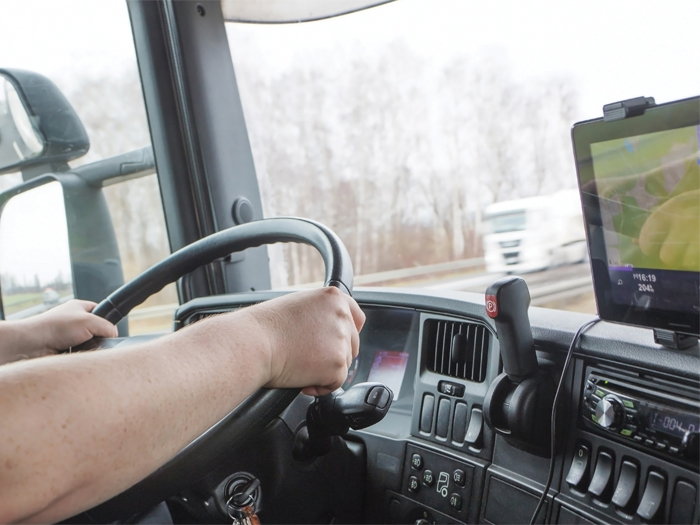AmTrust’s Matt Zender: An Optimistic Take on Wearables in Workers’ Compensation
For a line of business that has historically been relatively slow to adapt to change, workers’ compensation has been taking technological leaps lately.
For example, digital tools and data have helped make insurance companies’ claims processes more efficient. Video conferencing and telehealth have helped to improve injured workers’ claims experience.
And most recently, wearable technology offers the potential to avoid claims altogether.
Role of Technology in Workers’ Compensation
Businesses use many different types of technology, from machinery to computer and security systems, to manage their operations.
During COVID-19 shutdowns, loss control teams offered virtual assessments utilizing a client’s mobile phone.
By utilizing existing infrastructure, such as security cameras, loss control experts can evaluate near-miss incidents or a worker’s lifting technique and then can offer suggestions on how to improve the process.
To help reduce the risk of injuries and improve safety, companies can move beyond using their current infrastructure and study how wearable technology can be used in their workplace. With wearable technology, companies can monitor and track their staff’s activities, analyze motions and alert for potential hazards.
Additionally, some wearables can supplement a worker’s physical capabilities and enhance an injured worker’s return to work.
Wearables for Workers’ Compensation
Wearables for workers’ compensation have yet to see widespread adoption.
Still, their implementation continues to grow as the technology continues to develop and more companies are seeing the value in helping to prevent worker injuries, assist an injured worker when returning to work or augment daily routines.
For workers’ compensation purposes, wearable technology can do many things, from measuring an employee’s posture and lifting techniques to a worksite’s environmental conditions, including ambient light, humidity, temperature, air pressure, noise dosage and more.
Newer wearable technology can provide real-time data, giving immediate feedback to managers and staff about potentially hazardous conditions or situations to help mitigate risk potential.
The data collected from wearable devices may also help prevent future injuries by predicting hazardous worksite issues and enhancing workplace safety measures.
What Are Wearables?
NCCI defines wearables as any advanced electronic device with smart sensors, worn or carried on the body, that seamlessly collects and transmits data through a network, WiFi or Bluetooth connection.
It is vital to have management support and employee engagement for wearable programs. Different types of industries, including manufacturing, construction and transportation, are testing wearable technology.
Wearable sensors can be beneficial for workplace safety by:
- Measuring and monitoring at-risk movements in real-time
- Developing an ergonomic risk score
- Providing real-time feedback to the worker via audio and haptic feedback
Musculoskeletal Disorders in the Workplace
Workplace injuries vary from one-time incidents to conditions that occur over time.
One category of long-term injury is musculoskeletal disorders (MSDs). When not properly treated, these issues can be debilitating for workers. MSDs include soft-tissue injuries such as sprains, strains, tears, hernias and carpal tunnel syndrome and are the most frequently reported causes of lost work time.
Musculoskeletal disorders can impact a company’s productivity and potentially cause increased health care, disability and workers’ compensation costs.
Exoskeleton Technology
The use of occupational exoskeleton technology, including exoskeleton suits, can reduce a worker’s strain, fatigue and injury risk — some of the more common contributing factors to MSDs.
Passive exoskeleton devices can be used to brace the spine when lifting and holding loads, support arms and shoulders during sustained overhead work and reinforce the ankle, knee and hip joints when carrying heavy materials.
However, exoskeleton suit configurations must be applicable and usable for a broad set of work tasks and for users of different sizes and body types.
Exoskeleton devices can impact workers’ compensation insurance in positive ways by:
- Decreasing the number of long-term workplace injuries rates. Repetitive motions or awkward work positions can cause a degradation of supporting muscle groups.
- Increasing hidden risks that become apparent after long-term use, which could increase workers’ compensation claims.
- Returning injured employees to work as quickly and safely as possible.
Exoskeletons can be used to reduce the time injured employees are out of work. An injured worker could use an exoskeleton to assist them with their work until they are fully recovered, and then the wearable technology would be removed.
Ergonomic AI Services
A workplace ergonomic program can reduce stress and eliminate injuries associated with the overuse of muscles, bad posture and repetitive tasks.
Ergonomics tools are utilizing artificial intelligence (AI) technology to analyze workplace ergonomic risk factors, such as posture, force, frequency and duration, that are the primary cause of MSDs and strains and sprains.
The Future of Technology and Workers’ Compensation Looks Bright
As wearable technology continues to be fine-tuned, it could become an integral part of workplace safety processes and the workers’ compensation market. Employee training programs and coaching can help workers learn to use wearables correctly.
Also, businesses can utilize ergonomic AI technology to help improve employee risk factors to help reduce the potential for workplace injuries.
One of the main reasons wearable technology is not seeing more traction in the workplace is because of cost, which can look prohibitive.
But businesses should think holistically about the total spend of using wearables compared to the cost of worker injuries, and not just the technology’s individual unit price.
With more widespread use, the data from wearables can provide information that could lead to safer workplaces and potentially lower the overall costs of workers’ compensation claims.
As the use of different types of exoskeleton technology increases, the insurance industry could lay the groundwork for how future generations of workers are protected, by promoting long-term studies on the impact of exoskeletons on injury rates and overall costs of usage. &










